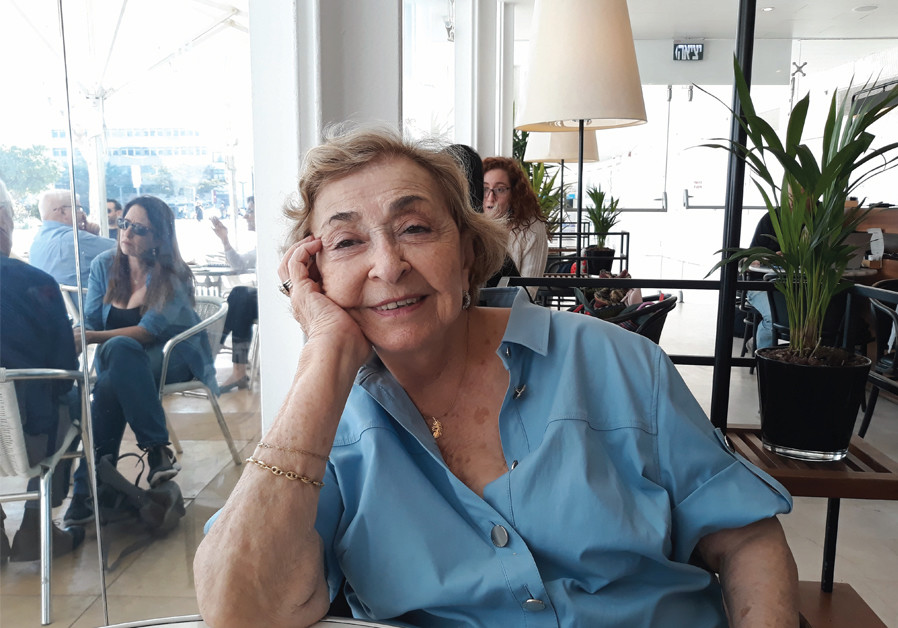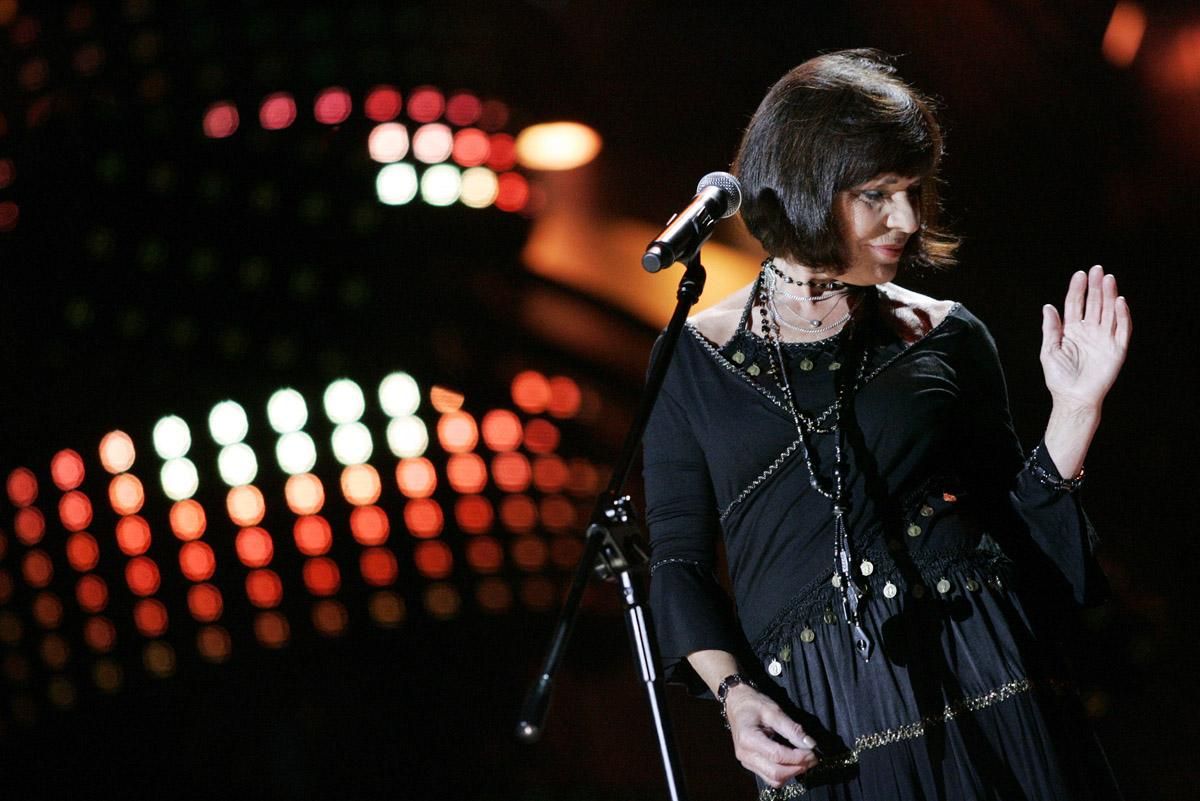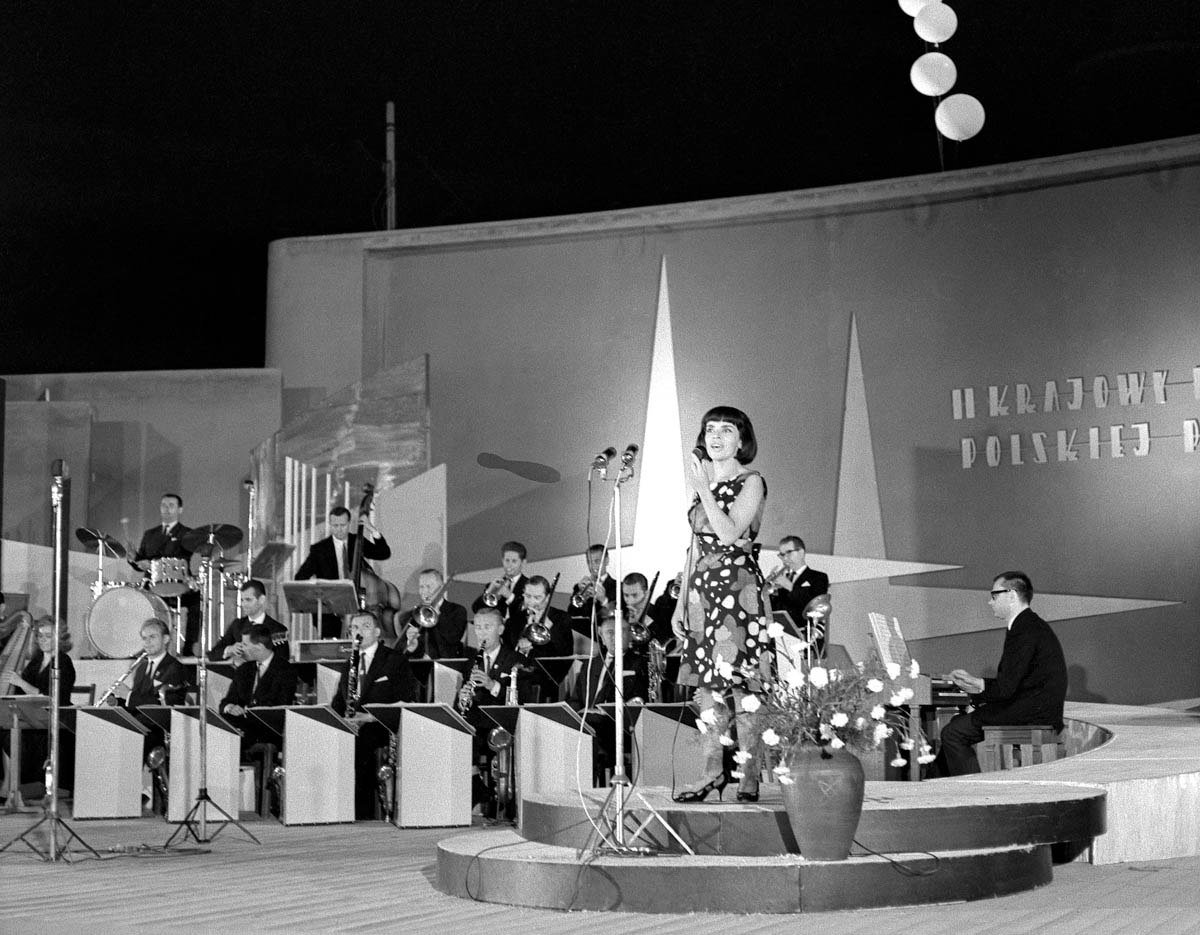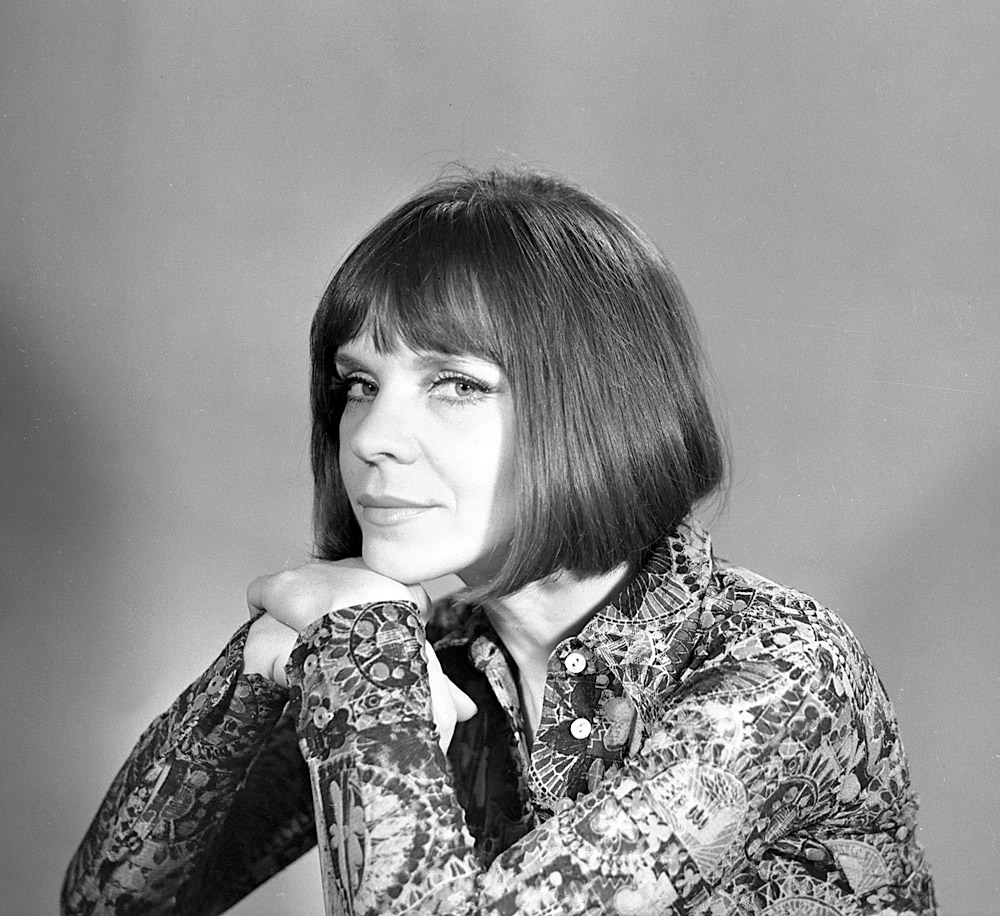BASIA MONKA
The First Lady of Israeli Theater, Lea Koenig-Stopler, reminisces about two new plays.
 LEA KOENIG-STOLPER: Israelis love and respect theater.. (photo credit: BASIA MONKA)
LEA KOENIG-STOLPER: Israelis love and respect theater.. (photo credit: BASIA MONKA)
The First Lady of Israeli Theater just celebrated her 89th birthday. Lea Koenig-Stolper was born in Lodz, Poland; over the years she appeared in more than 100 plays in Habima and other theaters. She is still one of the most active actresses in Israel.
The Magazine recently sat down with her to talk about two new plays she is currently performing in: King Lear by Shakespeare and Behind the Fence, based on a Bialik story, where she acts in Russian. We learn about the complexity of acting in different languages and the importance – or not, of gender – in her playing King Lear. She tells us of her love for the Yiddish language and the disappearing Yiddish world, and the crucial decisions she had to make after moving to Israel and be reborn as an Israeli Hebrew actress.
Koenig is multilingual. The interview was conducted in Hebrew, although with me also being born in Poland, we spoke also in that native tongue.
I wanted to start by saying that the Israeli theater Queen Lea plays the king, King Lear at Habima. But thinking about it, I have realized that your surname Koenig, König, means king.
Yes, that’s right.
So this role was waiting for you.
No, he did not write it for me. But really, this part is not written as a king, it is Lear. It is not important if this is a man or a woman. And also I don’t insist in the play to be just a man.
Within my character we have both a man and a woman. And I think this way. When I perform it, I don’t think about myself being a man, but that I am Lear.
Do you think the problems Lear is facing are still relevant today?
Absolutely. I don’t want to give names, but the problem of elder parents who are not taken care of, is present also in the theater community. There are actors who have the story of Lear at home… In general, there exists the problem of old people, whose children are not always there. In Lear, my interest is to focus on his family situation and his family issues are also involved in the politics. You can see that children do not think at all about their father, the one who raised them. They only think how to gain, how to profit.
I believe, as a young actress you dreamed about Shakespearean roles, as most of actors do, but Lear was not one of them?
I did not think about it. This was the idea of the theater now, they offered me that. But in recent years, in some places in the world, Lear was performed by women. That tells us the problems we face, specifically in the relations with children, are essentially the same for a man and a woman.
Regarding parts in Shakespeare’s plays, I was also Gertrude in Hamlet. But if you ask me about when I was young, I was not so interested in his characters. I was more intrigued for example by characters by Ostrovsky [Alexander]. I loved The Visit by Dürrenmatt [Friedrich]. I loved the variety of characters, but was not in Shakespeare at that time…
More of the contemporary theater?
I must say, yes.
What do you think is the difference between the way directors work today and in the 1960s when you moved to Israel?
Everything has changed. We live now in the times of technology. From day to day, it upgrades fast. It is impossible not to follow it. The people, the energy nowadays, the desire to achieve, that race against the time – makes lots of differences.
recommended by: Leon Rozenbaum

For example?
You build a play much faster today. The technology that is connected with the play is different. But also what directors are looking for is different. Today, the modern theater doesn’t exactly say what to think, but instead wants you open your feelings in order to understand what is going on a stage. And the public loves it. There is also the fringe, now, it gets a lot of significance in the theater scene.
You are saying that nowadays the preparations for the play are faster, shorter. How long were they in the case of ‘King Lear?’
I have worked on that a lot of time myself. Together, we worked on that for four months, which is long. Normally we prepare a play in about a month, or month and a half. It depends.
I am not asking how long it takes you to learn the dialogues, because after all those years it must be natural for you…
It comes naturally, but not as easy as 20 years ago.
I would like to ask you about the language itself. The audience today may not realize that the biggest Israeli actress did not always know Hebrew. Did you speak any Hebrew before coming to Israel?
No. I did not know Hebrew at all.
So at first, did you learn to speak Hebrew in real life or only for the lines for the theater plays?
There was no a special ulpan for actors. I did not know any Hebrew before. Many people are mistaken, thinking that if you know Yiddish, you know Hebrew, but there is no connection. There are some expressions in common, but no more. If you know Yiddish, it’s easier to learn German.
Was Polish or Yiddish your first language?
I do not know. It seems to me that at my home all those languages were spoken, as was accustomed at that time in Europe. My father was from Vilnus – a “Vilnianit” – he spoke Russian, my mother was Lodzanit – she spoke amazing Polish. She never spoke as well in Romanian, after that. My grandmother spoke to me in Polish and Yiddish. With my husband, he was from Czernowitz, I spoke German, Yiddish, Romanian and at the end in Hebrew, too. So all those languages are inside of me.
But is there a difference for you in working in Hebrew, Yiddish or Russian?
There is a big difference. Despite all those years, Hebrew was not spoken to me when I was a child. In this language, I sometimes make mistakes. I do not always feel a word in Hebrew.
So is it easier in Yiddish?
In Yiddish, I have no problem.
In ‘Behind the Fence,’ based on Hayim Nahman Bialik’s story, the new play at Habima directed by Moshe Kepten, you perform for three hours, all the time in Russian.
I have not spoken it for many years. So there are some nuances in the accent, that I say differently. But I speak Russian well, much better than Polish now.
Some years ago I saw you in Warsaw at the Singer Festival and you spoke Polish on the stage.
Because I knew I had to. When you know you have to, the brain starts to work. I speak Polish, but not correctly, I mix it with Russian. It bothers me a bit, that I don’t speak fluent Polish. I also speak Romanian. I spent 12 important years in Romania; there I became an actress.
Let’s go back yet in time. You had a career in Romania. Why did you decide to move to Israel in 1961?
I left Communist Romania. The perception of the world, the mentality, all of that was different. Suddenly you come to a capitalist, democratic country, – the new world.
Now to someone young, it is hard to comprehend, when I say I could not travel, I did not receive permission. A young person asks me, “What do you mean, you did not get permission? Why? What do you mean they did not perform plays of Ionesco in Romania?” It is hard to explain to someone who did not live there in those times.
Back in Bucharest, I was already a very successful actress and a “young celebrity.” When you leave your career behind, you don’t know what the future will bring. “You change the place, you change the luck (mazal.)”
It’s hard for me to forget that I was an olah hadasha. Those were hard times, but also special and moving.
Did you start to work at the Yiddish theater when first you moved to Israel?
No.
Why not? That was easy for you to do.
That was very easy. I had many invitations, and offers followed by money, that could have solved problems of an apartment, a fridge, and all of those things. But I did not take them, because my mother [Dina Koenig] was not only a fantastic actress, but also a very smart woman and she told me, “You must start in Hebrew. You must prove to yourself and others that you able to perform in Hebrew.” She told me, “First you must prove to everyone that you can act in Hebrew, then you can perform in Yiddish or any other language you want.” She was right. So this is how we did it, my husband [Zvi Stolper] and I, we started to perform in Yiddish only three years after working previously in Hebrew.
What was your first play in Hebrew?
The very first play in Hebrew was Mr. Puntila and his Man Matti by Bertold Brecht. Immediately after that, I performed in an Israeli play, Genesis, by Aharon Megged, a great Hebrew writer [born in Wloclawek, Poland]. That was the push to my career here.
When I moved to Israel, many of the actors at the Yiddish theater were from Warsaw. Those theaters worked without any support; they were private businesses. There was still a public that was drawn to Yiddish and there were some big stars. There were Dzigan and Shumaher [Szymon Dzigan (1905-1980) and Yisroel Shumacher (1908-1961)]; they managed to engaged the Hebrew audience also.
What do you mean by that?
Their sense of humor, their style of satire, was very strong and very good. At that time, there was already a Hebrew audience here that did not know Yiddish, but that was coming to see Dzigan and Shumaher. In general, the majority of audience of Yiddish theaters were people who spoke Yiddish also at home.
But that has changed. There are fewer and fewer people who go to the Yiddish theaters now and when they do, it is with simultaneous translation.
Did you feel some connection to your father, Josef Kamien, when you were in Warsaw, at the Jewish Theater?
Of course I did. My parents were well-known actors. There were people who remembered them, I met them. It was very moving.
But time runs. At my age, I must accept it, that a generation is coming and a generation is leaving. We have a new generation. But yes, I would like them to be remembered and given respect, and that people would want to learn about them.
Were your grandparents also actors?
No, my grandparents were “normal people.” [Laughs]
Why do you use surname of your mother, Koenig?
My father died during the Second War World when we were in Russia. My mother remarried and she changed her surname. She decided I would go by her family name.
What do you remember from Lodz, your childhood in Poland? Do you remember the theater of your father?
Not much…
I can imagine you as a little girl sitting behind the stage, watching your parents.
No, they were not taking me to the theater. My mother was afraid to. She did not want me to become an actress. She did not raise me to be an actress. She knew it is not an easy life, so she did not want me to follow this route…
But you still did.
This is thanks to my husband. He pushed me to that. Once, he heard me reciting and he said I should try. So I tried and I succeeded.
Do you feel that young actors who work with you are also your students?
I don’t know if they are my students. But I think that when they perform with me, they take something. I hope so.
When I see you on the stage, especially during the applause after a play, I often think that I am seeing you with your family. For example, when you received flowers, you gave them to the girl who was acting in the play [‘Behind the Fence’]. You gave more than flowers; you gave her your hand. Another time, about three years ago, after the play ‘Et Dodim’ [‘In the Time of Love’], you invited a young man on the stage who bent down on one knee and proposed to one of the actresses from the play…
Yes, I did it?
Yes, I remember it well. So you are not just a ‘König Lear,’ you are like the mother of the theater. Do you feel this way?
I don’t know about that. But the audience is still with me and gives me a lot of hope. Israelis love and respect theater. There is no doubt. We are a nation like that. Thanks to people who were once in Poland, in Russia, the Jewish public is used to theater. Shalom Aleichem on a wheelchair used to travel to little villages where Jewish people lived. They would bring a table and a carpet from their homes and would make a theater in a storage unit. This passes from generation to generation.
Recently I saw you act as a Ukrainian woman. Earlier, as Jewish woman, also an American woman in the fantastic ‘The Velocity of Autumn.’ As King Lear, you are not young as well. You play old people, but now we’ve met and in real life you are young! Preparing for this interview, I listened to you singing songs of Mordechai Gibirtig, songs that my grandfather loved so much and I have noticed that when you sing in Yiddish, you shine. Do you think you are more yourself when you sing in Yiddish?
I do not carry the roles home. I really like speaking Yiddish. I enjoy it. There are certain phrases, expressions in Yiddish that you cannot translate. Nothing specific comes to my mind now, but when you are saying it in Hebrew, it loses its taste.
What is your dream today, about which play?
My dream is to be healthy. To do those six plays, that I do now. I think if I did Lear at my age, that it is pretty good.
An absolutely outstanding Lear – thank you and happy birthday!
For more information: www.habima.co.il
 Sława Przybylska
Sława Przybylska Sława Przybylska, 2006, fot. Adam Warzawa/Forum
Sława Przybylska, 2006, fot. Adam Warzawa/Forum Sława Przybylska podczas 2. Krajowego Festiwalu Polskiej Piosenki, fot. Janusz Sobolewski/Forum
Sława Przybylska podczas 2. Krajowego Festiwalu Polskiej Piosenki, fot. Janusz Sobolewski/Forum Sława Przybylska, 1974, fot. Jerzy Płoński/Forum
Sława Przybylska, 1974, fot. Jerzy Płoński/Forum






